 |
Foodoric and associated companies are chemicals manufacturing companies exporting and supplying Calcium Gluceptate USP BP Grade, operated in India USA UAE Asia Europe and other countries around the world. The associates have one or more of certifications like c-GMP, ISO-9001, ISO-14001, ISO-22000:2005, FSSC 22000; OHSAS 18001; Kosher and Halal Certified; HACCP, FSSAI and FDA - GMP approval. Buyers are assured of good quality and CIF wholesale and retail price for supplies of our Acetic Acid. |
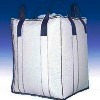
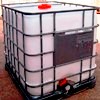
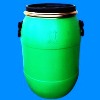
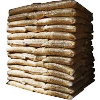
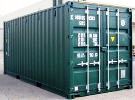


Calcium Gluceptate USP BP Manufacturers Suppliers
Calcium Gluceptate
Pure

Calcium Gluceptate CAS Number 29039-00-7, Molecular Formula: C14H26CaO16, Molecular Weight: 490.42
Calcium Gluceptate USP Grade Specifications
C14H26CaO16 (anhydrous) -- 490.42
Glucoheptonic acid, calcium salt (2:1) --- [CAS 29039-00-7].
Calcium Gluceptate is anhydrous or contains varying amounts of water of hydration. It consists of the calcium salt of the alpha epimer of glucoheptonic acid or of a mixture of the alpha and beta epimers of glucoheptonic acid. It contains not less than 95.0 percent and not more than 102.0 percent of C 14H26CaO16, calculated on the dried basis.
Identification:
A: Infrared Absorption 197K.
B: A solution (1 in 50) responds to the tests for Calcium 191.
pH: between 6.0 and 8.0, in a solution (1 in 10).
Loss on drying: [NOTE—The quantity taken for the determination may be adjusted, if necessary, for instrument sensitivity. Weight loss occurring at temperatures above about 160 degree indicative of decomposition, is not to be interpreted as Loss on drying.] Determine the percentage of volatile substances by thermogravimetric analysis on an appropriately calibrated instrument, using 10 to 25 mg of Calcium Gluceptate accurately weighed. Heat the specimen under test at a rate of 5 degrees per minute in an atmosphere of nitrogen, at a flow rate of 40 mL per minute. Record the thermogram to 150 degree: the anhydrous form loses not more than 1.0%, the 2H2O form not more than 6.9%, and the 3½H2O form not more than 11.4%, of its weight.
Chloride: A 1.0-g portion shows no more chloride than corresponds to 1.0 mL of 0.020 N hydrochloric acid (0.07%).
Sulfate: A 2.0-g portion shows no more sulfate than corresponds to 1.0 mL of 0.020 N sulfuric acid (0.05%).
Heavy metals: Dissolve 1 g in 25 mL of water: the limit is 0.002%.
Reducing sugars: Dissolve 0.50 g in 10 mL of hot water, add 2 mL of 3 N hydrochloric acid, boil for about 2 minutes, and cool. Add 5 mL of sodium carbonate, allow to stand for 5 minutes, dilute with water to 20 mL, and filter. Add 5 mL of the clear filtrate to about 2 mL of alkaline cupric tartrate and boil for 1 minute: no red precipitate is formed immediately.
Calcium Glucoheptonate BP Ph Eur Grade Specifications
Ph Eur
C14H26CaO16 -- 490.4 -- CAS 29039-00-7
DEFINITION
Mixture in variable proportions, of calcium di(D-glycero-D-gulo-heptonate) and calcium di (D-glycero-D-ido-heptonate).
Content: 98.0 per cent to 102.0 per cent of calcium 2,3,4,5,6,7-hexahydroxyheptanoate (dried substance).
CHARACTERS
Appearance: White or very slightly yellow, amorphous powder, hygroscopic.
Solubility: Very soluble in water, practically insoluble in acetone and in ethanol (96 per cent).
IDENTIFICATION
A. Thin-layer chromatography.
B. 0.2 ml of (see Tests) gives reaction (b) of calcium.
TESTS
Solution S: Dissolve 10.0 g in carbon dioxide-free water prepared from distilled water and dilute to 100 ml with the same solvent.
Appearance of solution: Solution S is clear and not more intensely coloured than reference solution.
pH: 6.0 to 8.0 for solution S.
Reducing sugars: Maximum 1 per cent, expressed as glucose.
Cyanide: To pass the test.
Chlorides: Maximum 100 ppm.
Sulphates: Maximum 100 ppm, determined on solution S.
Iron: Maximum 40 ppm.
Heavy metals: Maximum 10 ppm.
Loss on drying: Maximum 5.0 per cent, determined on 1.000 g by drying in an oven at 105C for 3 h.
Bacterial endotoxins: Less than 167 IU/g, if intended for use in the manufacture of parenteral dosage forms without a further appropriate procedure for the removal of bacterial endotoxins.
ASSAY: Dissolve 0.800 g in a mixture of 150 ml of water and 2 ml of 3 M hydrochloric acid . While stirring, add 12.5 ml of 0.1 M sodium edetate , 15 ml of 1 M sodium hydroxide and 0.3 g of hydroxynaphthol blue, sodium salt. Titrate with 0.1 M sodium edetate until the colour changes from violet to pure blue.
1 ml of 0.1 M sodium edetate is equivalent to 49.04 mg of C14H26CaO16.

Calcium Gluceptate Manufacturers Suppliers:
Foodoric Group of Cos
India, USA, UAE, Europe
e-mail: info@foodoric.com

Copyright Last 11 June, 2025
Calcium Gluceptate Suppliers, Exporters, Importers, Manufacturers offering good CIF wholesale and retail prices, quality and online information.
A jackal woke up early in the morning and went in to the plains. He looked at his long shadow in the rising morning sun and said to himself, "I must have a camel for my meal today".
He kept moving around till noon and it was getting hot and the jackal was tired. He was also hungry and thirsty. He looked at his small shadow in the mid-day sun. He murmered, "I was only joking about the camel, a mouse will do".